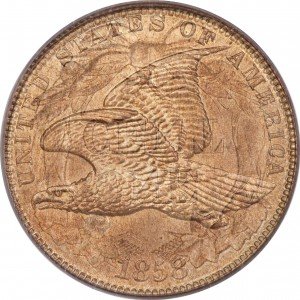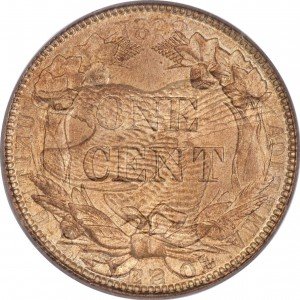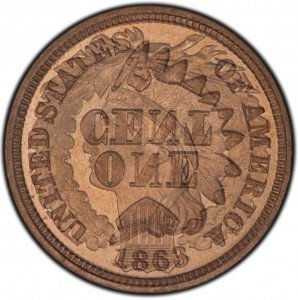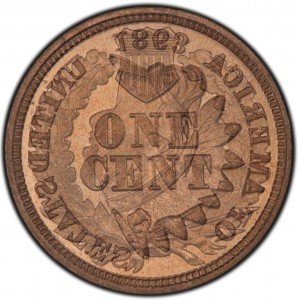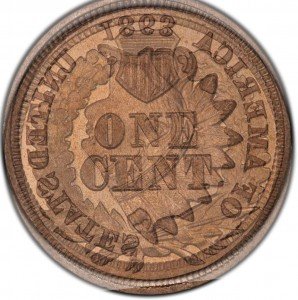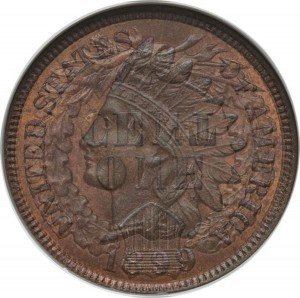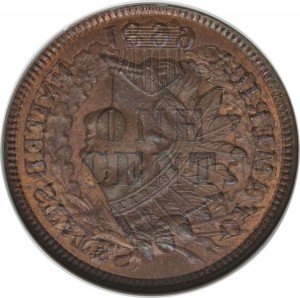Flying Eagle – Indian Head Cent Overlays
Overlaying the obverse and reverse images of a coin helps us visualize proper die alignment. US coinage is minted with medallic orientation, which means the images on each side of the coin appears right-side-up if you flip the coin vertically. Flipping the coin horizontally will show the other side as up-side-down.
The medallic orientation of the dies explains the extra devices that appear on a coin if the dies that made the coin clashed together, without a planchet between them. When dies strike each other in the press hard enough to leave impressions of themselves on the other, they are called clashed dies. Some clashed dies are very extreme and show heavy outlines of the elements that appear on the other side of the coin.
In extremely rare circumstances, one die can become tilted in the press due to a missing, broken, or loose set screw. This is how misaligned die errors occur. These errors look like off-center strikes, but on only one side of the coin. Even rarer is for misaligned dies to clash, which leaves an impression of the opposite die in an off-center position. However, it is also thought that off-center clashes could occur outside of the press. There are a few examples in the Indian Head Cent series of off-center clashes thought to have occurred during the die making process or installing of the dies.
- 1858 Flying Eagle Penny Obverse Overlay – Photos courtesy of Heritage Auctions
- 1858 Flying Eagle Penny Reverse Overlay – Photos courtesy of Heritage Auctions
- 1863 Indian Head Penny Overlay – Obverse
- 1863 Indian Head Penny Overlay – Reverse
- 1863 Indian Head Penny – Misaligned Dies Example
- 1899 Indian Head Penny Obverse Overlay – Photos courtesy of Heritage Auctions
- 1899 Indian Head Penny Reverse Overlay – Photos courtesy of Heritage Auctions
